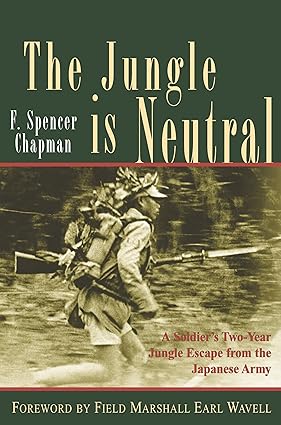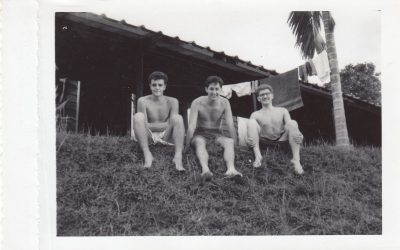Little did I realise when reading The Jungle is Neutral as a fifteen year old that, four years later, I would find myself in the same Malayan jungles as the author, although not in nearly such dire circumstances. These circumstances are detailed in my Malayan military memoir, Misadventures with Coco-Oscar. Little did I also realise that, two years after that, I would follow the author, F. Spencer Chapman, to the same Cambridge college. Or that he first enlisted in the Seaforth Highlanders, the same Scottish regiment in which my father served in World War II.

All of this came to light on reading an article in The Eagle, (Vol 96), the St John’s College annual alumni publication. Written by Rebecca Kenneison, the article recounts the story of Spencer Chapman and the role of the Special Operations Executive’s (SOE) Force 136 in Malaya during World War II.
Nor did I realise how much the ‘Rogue’s Gallery,’ that I managed as a member of the battalion’s Intelligence Section, owed to Spencer Chapman. After being exfiltrated from Malaya in 1945, he was able to document the organisational structure, military tactics and support and supply operations of the Malayan People’s Anti-Japanese Army (MPAJA).
Malayan military memoir: the Emergency begins
It was the MPAJA that would later form the nucleus of the Malayan National Liberation Army (MNLA). It was against the MNNLA we fought following the declaration of the Malayan Emergency, in June, 1948 after three rubber planters were murdered near Sungei Siput.
Spencer Chapman’s keen powers of observation and recall, and his navigation and jungle survival skills were honed in the most unlikely places. First, exploring the Yorkshire fells as a keen schoolboy naturalist. Second, on a meteorological expedition to Greenland, where he learned Arctic survival skills from the Inuit. Finally, in the Himalayas, as part of a British Mission to Tibet in 1936.
Ski battalion in World War II
Early in World War II Spencer Chapman’s cold weather survival skills saw him posted to a ski battalion. This was soon disbanded after the fall of Finland. He then became an instructor at the commando training centre at Lochailort. Soon after he was transferred to Australia to undertake a similar role.
In September 1941 he moved on to teach guerrilla warfare at the 101 STS training school in Singapore. Here he trained volunteers to form ethnically mixed stay-behind parties in the event that Japan invaded Malaya. By December 1941 the invasion was a reality. It was too late to complete the recruitment and training programme. Nor could he establish concealed food and stores dumps as was the intention.
Spencer Chapman and ‘The Mad Fortnight’
Undaunted, in January 1942, Spencer Chapman formed a number of ad hoc ‘stay-behind’ parties. During what he termed ‘The Mad Fortnight’, his own party blew up bridges, derailed trains and ambushed convoys. They then ran out of supplies and he lost most of his group in a disastrous break for the coast.
Thereafter he spent most of the remainder of the war with the MPAJA. He worked trying to re-establish contact with the SOE to set up re-supply lines to sabotage Japanese operations. During this time, he spent much of his time training the guerrillas in the use of their assorted weapons.
He also taught them basic military techniques, as well as producing instructional posters. The irony of this was that the MNLA later used these techniques and the weapons supplied by SOE after contact was re-established in 1945, against the Commonwealth forces during the Malayan Emergency.
A man of extraordinary resourcefulness and resilience
Freddy Spencer Chapman was a man of extraordinary resourcefulness and resilience, both mental and physical. This may have been a result of being orphaned at a very early age. However, during his time in Malaya this resilience was underpinned by his credo that ’The jungle is neutral’. By this he meant ‘it provides any amount of fresh water, and unlimited cover for friend and foe. It is the attitude of mind that determines whether you go under or survive’. All the more extraordinary then, that plagued by chronic back pain, recurring stomach pain and headaches, he took his own life in 1971 at the age of 64. The thought of becoming dependent perhaps too much to bear for a such a self-reliant man.
My own Malayan military memoir, Misadventures with Coco-Oscar is out now and available in paperback and eBook.

